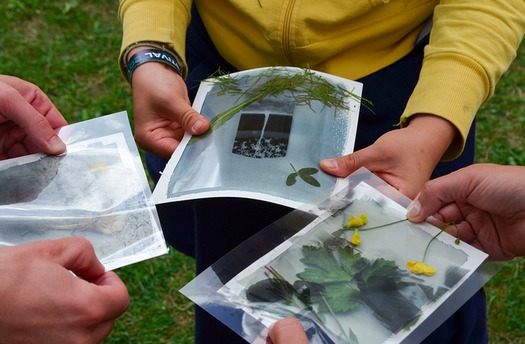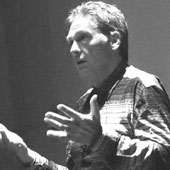
Mapping a bioregion with plants – Joachim Robert Cyanotype workshop at FuturePerfect 2012
In what ways can design help people interact with living systems in ways that help both of them thrive? And, what small practical steps might one take to test the effect of small actions on the system as a whole?
These two questions inform a Doors of Perception workshop that takes place in August as part of the FuturePerfect Festival in Sweden.
Stockholm’s Archepelago is looking for ways to grapple with an array of complex issues — waste, water, forests, sewage, sanitation, and so on. These issues have one thing in common: they are all situations in which people interact with other living systems. Climate and social scientists describe these interactions between people and living systems as social-ecological systems.
Interactions between the social and the ecological are emerging in a wide variety of collaborative efforts around the world. Often working at at the scale of a bioregion, people are exploring how to meet daily life needs in ways that enhance, rather than degrade, natural and social assets.
Real-life examples include: farmers’ markets being turned into hubs for learning and knowledge exchange in regional food economies; the collection of food waste for composting and soil regeneration organized as social enterprises; renewable textile production connecting with recycling activities and managed as an ecosystem at the scale of the fibreshed; tree planting and care, watershed regeneration, sustainable urban drainage, blue-green corridors, and pollinator pathways, undertaken collaboratively as social forms of green infrastructure.
In recent times we’ve explored, in a variety of Doors of Perception workshops, how design might contribute to these complex real-world activities. Each event has been unique to its place and time — but they usually involve three stages:
a) we make some kind of map of actors, and the relationships between them, to represent the ecosystem in a way that can be shared. This artefact becomes our ‘campfire’;
b) we invite stakeholders to present a question or challenge that is bugging them — for example, the links between just two actors, or nodes, in a broader system — and look for ways to enhance that connection. (During this phase we encourage participants to find out if practices from other cultures, and other times, have the potential to be adapted locally);
c) we design the means by which feedback from the system can be monitored and perceived on an ongoing basis.
In August, we will run a Doors of Perception workshop as part of the FuturePerfect Festival in Sweden. It takes place on the island of Grinda in the Stockholm Archipelago.
We are partnering in the activity with a group of Swedish design schools and universities; their teams will form the core of the xskool. Some places will be available for independent visitors to the festival. Details on registration and other matters will follow soon.

